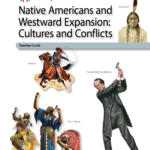Why does the U.S. Constitution separate the government into three branches? At the nation’s founding, the Constitution’s framers understood that executive, legislative, and judicial responsibilities differed, and they provided for these distinct functions. They also believed that concentrating authority in one body would result in tyranny. They therefore divided the government into legislative, executive, and judicial branches, so that no single part would become too strong, and empowered each to limit or “check” the powers of the others. This exhibit examines Congress’s unique role and the ways in which it can balance or dynamically shape and challenge the powers of two other branches.
Separation of Powers
Instead of placing authority in the hands of one person, like a king, or even a small group of people, the U.S. Constitution divides power. Power is first divided between the national, or federal government, and the state and local government under a system known as Federalism. At the federal level, the Constitution again divides power between the three major branches of our federal government: the legislative, the executive, and the judicial. Discover the battles of the branches in the National Constitution Center’s learning module.
Freedom of Speech
In this lesson, students examine the historical context and the drafting of the First Amendment by examining the motivations of the founding generation. Students will also examine various types of “speech,” such as symbolic speech, hate speech, and political speech, to address the scope of protections promised by the First Amendment and learn that speech can only be limited when it is intended to and likely to cause imminent violence. In each instance, students will explore when the government has some authority to restrict speech; areas of consensus among scholars, judges, and citizens; the strongest constitutional arguments on each side of contested issues; and U.S. Supreme Court cases that have addressed free speech rights.
Choice Board – How Effective Are Presidential Campaign Ads?
The methods in which candidates, political parties and interest groups promote their positions and policies have evolved since the first television campaign ads aired. In this lesson, students will view videos of historical presidential campaign advertisements and analyze the features found within each to determine the overall effectiveness.
The Appointment of Sandra Day O’Connor
The U.S. Constitution grants the President the power to appoint people to a variety of government positions. These appointments require careful thought and consideration since the people can have a great impact on the lives of many Americans during that President’s term. Some appointments need even greater thought and consideration, and those are to the federal judicial system and more importantly, to the Supreme Court of the United States. Justices of the Supreme Court (and other federal courts) serve lifetime appointments. Their rulings as they interpret the Constitution, and other situations as outlined in Article III of the Constitution, can have far-reaching effects for generations. With this awesome power to appoint comes an equally awesome responsibility to make sure that the individuals are the best people for the job. In this lesson, students will examine the appointment of Supreme Court Justice Sandra Day O’Connor, who was also the first female Justice. Students will examine the process by which a President makes the selection and the steps that lead to that person being confirmed by the Senate (or not).
Impeachment and Conviction
This printable infographic explains how impeachment works, who’s involved, where those entities get their authority, and what it really takes to remove a federal official from office.
The 14th Amendment and the Evolution of Title IX
Congress and the courts have applied the 14th Amendment’s equal protection clause to many aspects of public life over the past 150 years. In this activity, students will explore the evolution of the 14th Amendment through the lens of Title IX, which prohibits institutions that receive federal funding from excluding students from participating in educational and athletic programs on the basis of sex. The Supreme Court’s first Title IX case, Grove City College v. Bell, also demonstrates how each of the three branches exercises its authority.
The American Presidency: Core Documents
This collection of documents on the presidency begins with Alexander Hamilton’s commentary on the sections of the Constitution related to the executive branch and ends with President Barack Obama’s address to the nation defending his interpretation of executive authority under the Constitution to use force against the Syrian regime. The documents cover the executive’s role and the specific topics of presidential selection, term limits, and impeachment.
Fundamental Freedoms
This lesson uses three Supreme Court cases to illustrate the difficulty in balancing our rights as citizens with the authority of a governmental body. Students will learn what our rights are, where they come from, and how far they extend.
Native Americans: Cultures and Conflicts (CKHG Unit)

Across 7 lessons, this unit explores the ways of life of diverse Native American peoples and how their cultures were disrupted, displaced, and profoundly altered by westward expansion and American government policies and practices in the 1800s. Some of the content of this unit is tied to the “Pathway to Citizenship,” an array of civics-focused knowledge, questions, and activities.